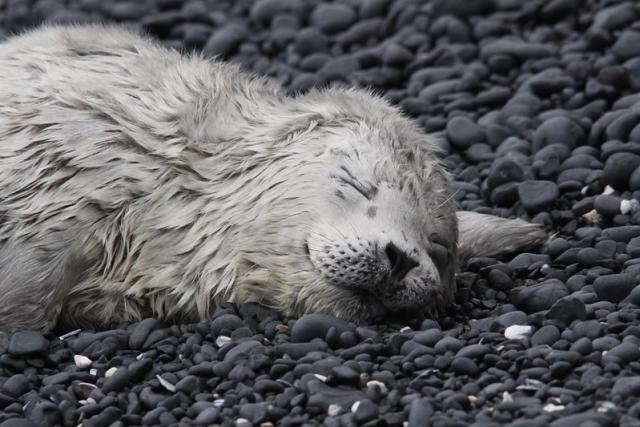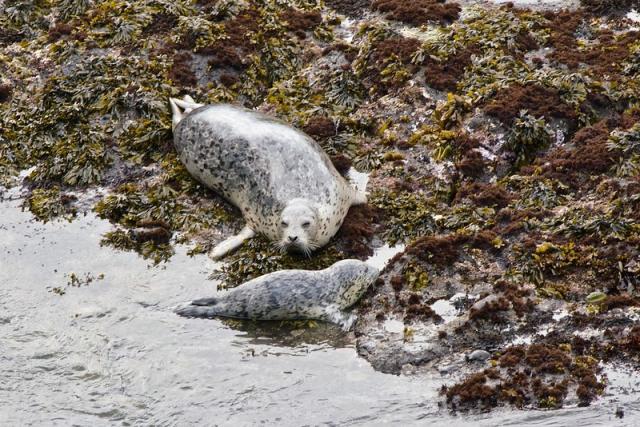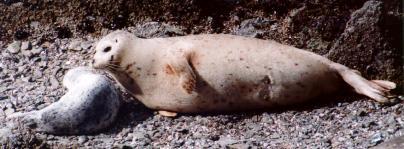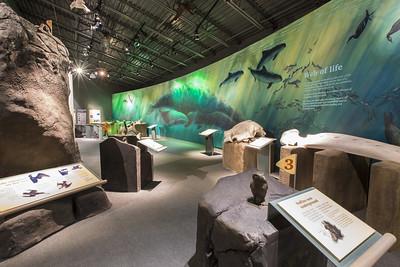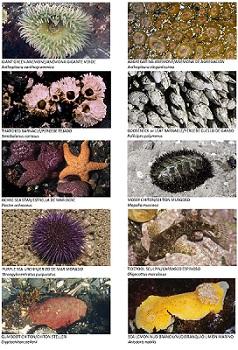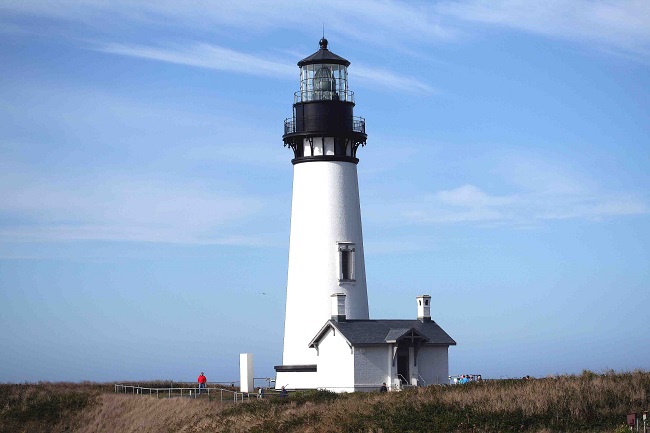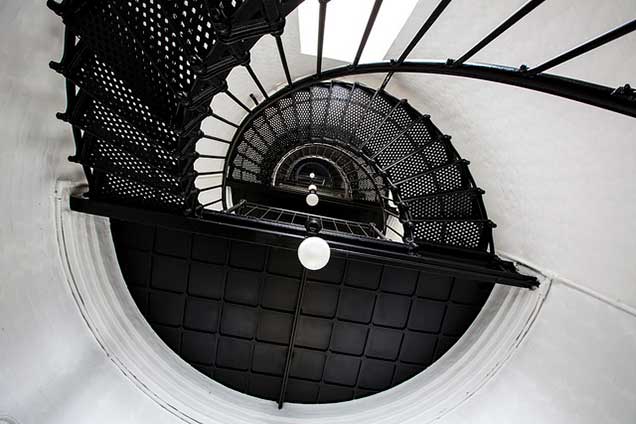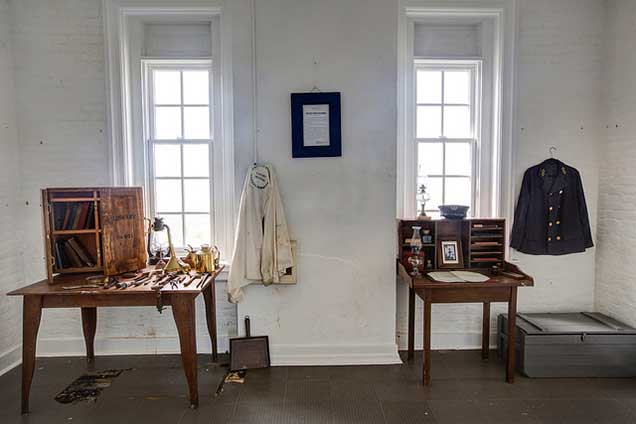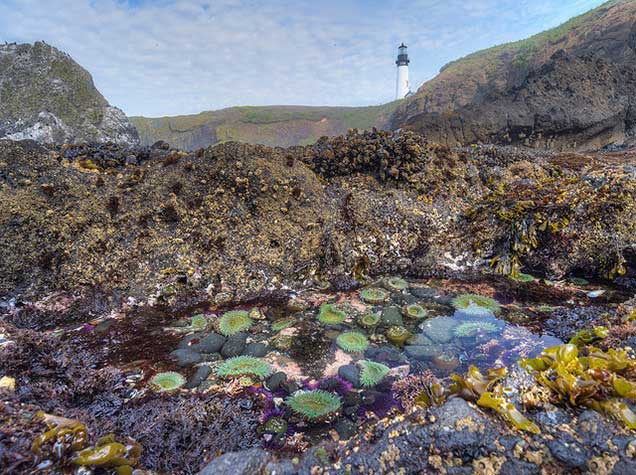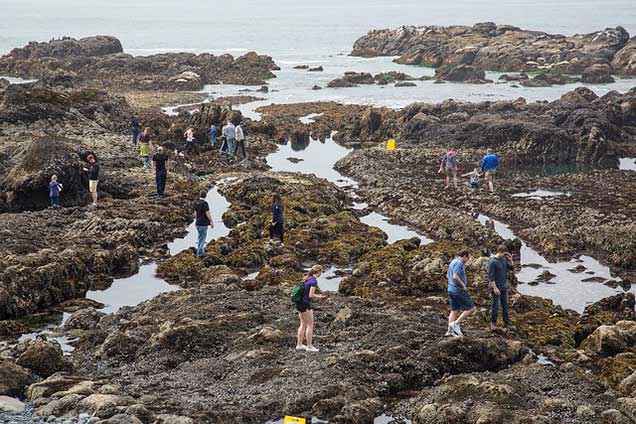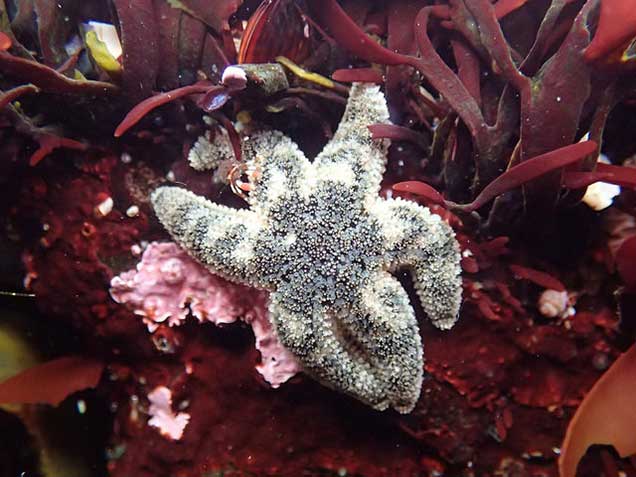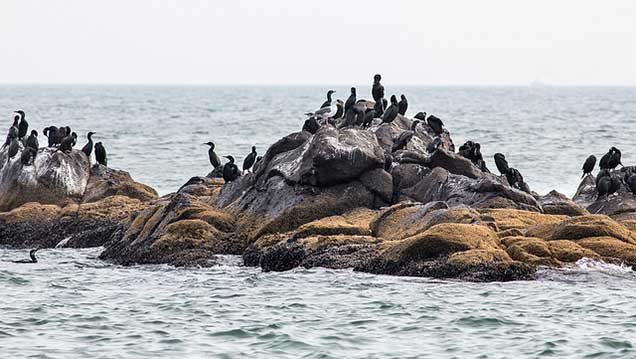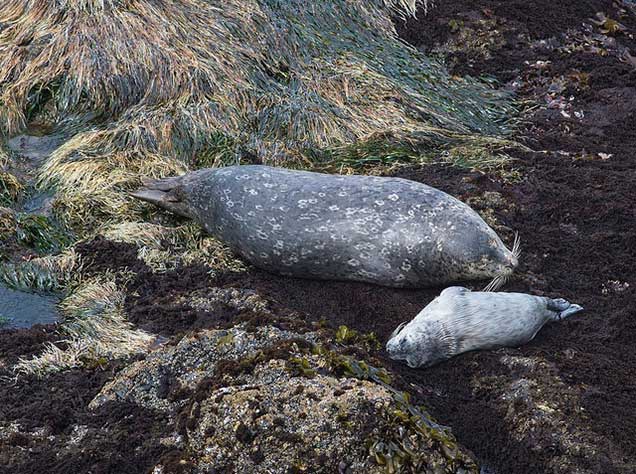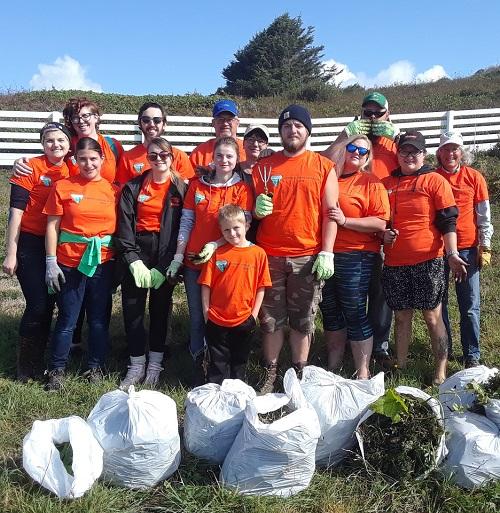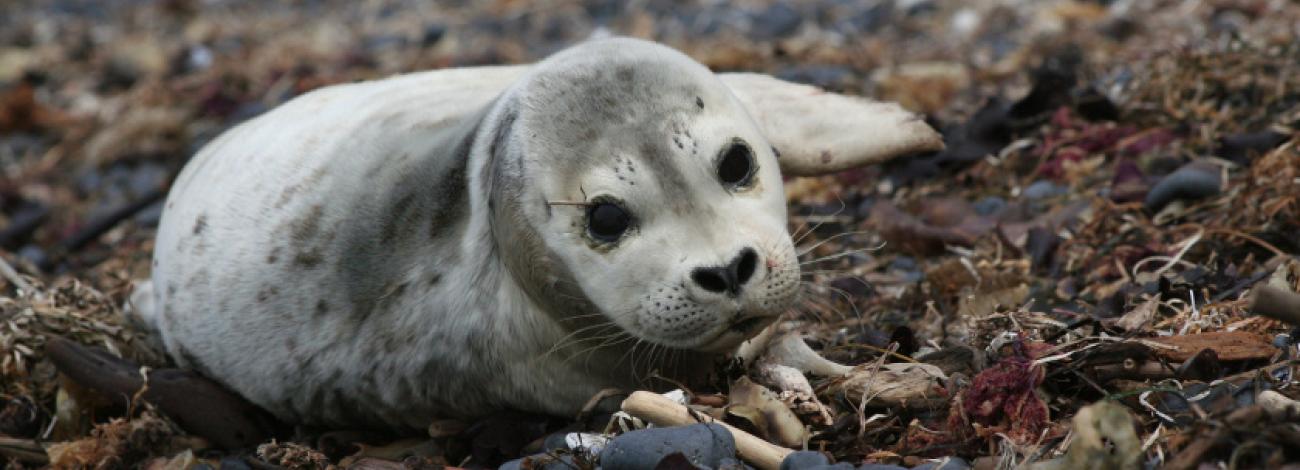
Learn and Explore
From exploring tidepools teeming with life to witnessing Oregon's tallest lighthouse, there is something for every visitor at Yaquina Head.
Yaquina Head is a natural area with many potential hazards such as large waves and steep cliffs. See our Safety & Access page for information on safely navigating the site with children, pets, and mobility devices.
- Observe Seals
-
Harbor seals can often be seen laying on the near-shore rocks off Cobble Beach and Quarry Cove. The best time to observe them is when the tide is out - use the "tidepool discovery times" for best chances for viewing.
Seal pup with white fur, called lanugo Harbor seal with her pup A zoom lens or spotting scope allows a closer look at a seal pup and its mother. In summer months, rangers often set up spotting scopes near wildlife (photo courtesy of Mitch Rohse). - Whale Watching
-
Which way are they migrating? If you visit between December and February, they are going south to the calving and breeding grounds in Baja. If you are visiting during March through May they are headed north to their feeding grounds in the Bering Sea.
What about summer (seasonal) whales? Approximately 150 whales spend their time feeding along the Oregon coast during the summer. They are usually medium size whales or cows with calves. Gray whales can grow between 40 to 45 feet long.
- Scan the ocean towards the horizon.
- Look for the blow (spout) that resembles a plume of smoke.
- Once you locate the whale, use your binoculars for a closer look.
- Early morning or evening, when the surf is calmer typically produces the best results.
- Patience makes a good whale watcher!
Gray whale mural in the Visitor Center - Tidepooling
-
Please remember Yaquina Head is a protected and fragile natural area. The cobbles roll and sea life is very slippery. Tread lightly and take only pictures.
To make your tidepool experience safe and worthwhile:
- Go slowly; keep an eye on the surf and keep small children within arm's reach.
- Walk on bare, dry rocks, avoid stepping on tidepool plants and animals.
- Stay out of the water.
- To avoid injuries to the animals, please OBSERVE them; DO NOT pick them up, poke them, or move them.
Commonly seen animals include anemones, urchins, mussels, barnacles, seastars, and many more.
- Birding
-
Birds are one of the most abundant, easily watched forms of wildlife at the Yaquina Headland. The availability and diversity of habitat at Yaquina attracts different bird species all year-round.
Spring

Bald Eagle Spring brings 65,000 common murres, Brandt's cormorants, pelagic cormorants, pigeon guillemots, western gulls, and glaucous-winged gulls to Yaquina's bluffs and offshore rocks. For bald eagles and peregrine falcons, the sea bird nesting season provides an all-you-can-eat buffet! Early in the morning, eagles and falcons can often be seen watching and preying upon seabirds near the Lighthouse.
Barn swallows arrive in the spring to build nests of mud pellets and straw, lined with feathers, on the ledges of the Interpretive Center. Violet-green swallows and peregrine falcons nest on the cliff walls surrounding the Interpretive Center. Watch for them from the parking lot as they dart and dive through the air.
Summer

White Crown
SparrowBarn swallows, and violet-green swallows are at Yaquina Head throughout July. Chicks can be seen peeking out of their nests while awaiting their parents' return with food. Large numbers of brown pelicans fly in long lines, low to the water. Pelicans often plunge dive from the air into the water to feed on fish.
Turkey vultures are often seen. The vultures are sometimes confused with bald eagles when in flight. Although both have large wing spans, vultures have a "V" shaped wing angle, while eagles soar with wings nearly flat.
Listen for the distinctive, raspy call of the Caspian tern as it flies over Cobble Beach.
White crowned sparrows and song sparrows can be spotted in the brush along trails and even around the Interpretive Center.
Fall

Cormorants 
Harriers From late summer through early winter, large numbers of brown pelicans can be seen on off-shore rocks after most the sea birds have left.
Northern harriers have been spotted on the trail between Quarry Cove and the Interpretive Center.
Red-tailed hawks arrive in late summer and early fall. They soar and hover with wings outstretched above Salal Hill.
Brandt's cormorants and pelagic cormorants may remain at their nesting sites through October. In the fall, adult-sized chicks appear dark brown rather than black like the adults.
Winter

Scoter Look for peregrine falcons on the cliffs above near the Interpretive Center or near the Lighthouse on Colony Rock.
Red-tailed hawks can be seen hovering above Salal Hill.
American kestrels can be seen at Quarry Cove or perching on road signs throughout the area.
Shorebirds, such as surfbirds and black turnstones, feed on barnacles and snails on the offshore rocks.
Western meadowlarks have been spotted in the grass between Quarry Cove and Ocean Bluff.
Black scoters, white-winged scoters, and western grebes can be seen off shore. Surf scoters are visible near Colony Rock, on the north side of the headland, and in Quarry Cove.

